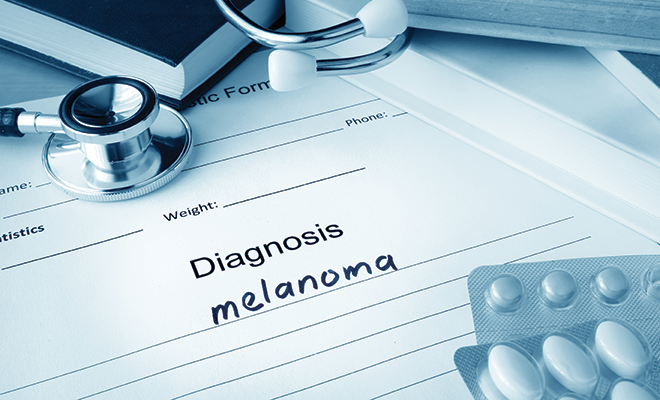
Melanoma Awareness: New Directions in Detection
What is the most common form of cancer? No, not prostate, breast, ovarian or lung; it’s skin cancer. Roughly 8,500 people in the U.S. are diagnosed with skin cancer every day.
Melanoma begins in melanocytes, which are deep epidermal cells that produce the pigment melanin. It is the rarest form of skin cancer, but it’s also the most aggressive and most likely to spread to other parts of the body. And it isn’t just for older folks. Skin cancer is the number one cancer in young women between the ages of 25 and 29, and the numbers are rising. From 1970 to 2009, melanoma increased 800 percent among young women and 400 percent among young men.
Combating melanoma starts with at-home skin exams and yearly visits to the dermatologist. Generally, a doctor’s exam focuses on viewing any skin changes with moles or freckles; examination concentrates on unusual features such as asymmetry, uneven borders and change in color or size. Suspicious spots may be viewed under a hand-held microscope called a dermatoscope and a biopsy may be necessary to evaluate further. But now, new technology on the market and in developmental stages has the potential to revolutionize early detection of melanoma.
MelaFind®
The MelaFind is an FDA-approved optical scanner that analyzes moles and atypical pigmented cutaneous lesions by taking a photo using light from visible to near-infrared wavelengths. That photo is analyzed as the MelaFind machine compares it to a database of thousands of melanoma images. The machine then assigns a number on a scale of potential melanoma and the doctor can decide whether a biopsy is indicated.
Smartphone Apps
In recent years, the development of smartphone apps has increased to provide both doctors and patients guidance on how to check for skin lesions and moles. The UMSkinCheck app allows users to take photos of suspicious lesions or moles and have the app assess them. The app also reminds users to monitor any skin changes over time, and it includes information on skin cancer prevention.
The Mole Detector app is available for purchase through Google Play. The app analyzes pictures of skin moles using the ABCDE method used by dermatologists, which looks at asymmetry, border, color, diameter and evolution. The app then calculates a person’s risk of skin cancer dependent on the characteristics of their mole.
SkinVision is a recently launched app that assists in the early detection of melanoma. The app uses fractal geometry to analyze photos of skin lesions and moles taken by the user. The proprietary algorithm builds a structural map that reveals the different growth patterns of the tissues involved. It indicates which moles and skin conditions should be tracked over time.
Algorithms and Computer
A Stanford University team has designed a program that, in its testing, identified images of cancerous moles and lesions as accurately as a dermatologist. The scientists, in collaboration with dermatologists, built a database of nearly 130,000 skin disease images and trained an artificial intelligence algorithm to diagnose potential cancer by comparison within the database.
The algorithm works in stages similar to human visual perception. A mole is photographed and the image is processed by a computer program that detects and singles out the skin in question. The texture of the mole is analyzed and the algorithm predicts whether it is cancerous or harmless. The developers note, “This fast, scalable method is deployable on mobile devices and holds the potential for substantial clinical impact, including broadening the scope of primary care practice and augmenting clinical decision-making for dermatology specialists.”
Professional Expertise
The American Academy of Dermatology states, “Technology is a wonderful tool, but it should not replace the expertise of a board-certified dermatologist.”
The yearly visit to the dermatologist is important, and doing a monthly skin exam will help you stay one step ahead of melanoma. The most common locations for melanoma on women are the legs and arms; it will either appear as a new mole or as an existing mole that has started to show change. Check your own skin regularly, or have a loved one help you, especially when you’re shaving or applying lotion, and take note of any new lumps or bumps. Ask your hairdresser to look out for any scalp moles changing color or shape. A regular gynecological exam can also allow your doctor to monitor any labial, vaginal or cervical changes.
All skin cancers can occur anywhere in the body, but melanoma is most common in skin that is often exposed to sunlight, such as the face, neck, back, legs and arms. It is important to detect and diagnose potential skin cancer as early as possible. Melanoma is highly curable if it’s caught early, but it’s much more likely than other forms of skin cancer to spread if it’s left untreated. ■
Sources: aad.org, cancer.org, melafind.com, medicalnewstoday.com, nature.com, skinvision.com and womenshealthmag.com.







